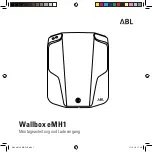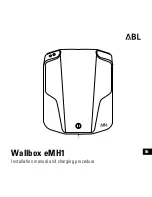
9
EEBC300A
Operating Instructions
Battery Charging Procedure
1. Perform visual inspection of battery(ies) before charging
to help prevent personal injury and property damage.
Check the following conditions, correcting defects and/or
replacing battery(ies) and components as required.
—
Cracked case.
—
Improper electrolyte level - fill to level specified by
battery manufacturer.
—
Frozen electrolyte or resulting damage.
—
Loose or corroded terminal/cable connection.
—
Frayed or broken cables.
—
Loose or over-tightened battery hold-down.
—
Correct size and capacity for vehicle.
2. Set Charging Mode Switch to:
—
Standard, or
—
Fleet.
3. Set Standard or Fleet Voltage Range switch. Determine
battery voltage from vehicle owner's manual or battery
instructions. Use:
—
6 LO or 6 HI (6 volt battery),
—
12 LO or 12HI (12 volt battery),
—
18 LO or 18HI (combination of 6 volt and 12 volt), or
—
24 LO or 24HI (combination of 6 volt and 12 volt).
4. Measure and record battery state of charge.
—
Specific gravity.
—
Open circuit voltage.
✓
✓
✓
✓
State of charge is used in step 10 to determine charge
time.
5. Verify AC power cord is disconnected from outlet and
Length of Charge Timer is set to OFF.
6. Connect charger cables to battery and power cord to
outlet. For additional information refer to
Important
Safety Instructions–Charging Instructions.
Never alter AC cord or plug provided. If it will not
fit outlet, have proper outlet installed by a
qualified electrician.
• Read, understand and follow Safety Information in
front of this manual.


































